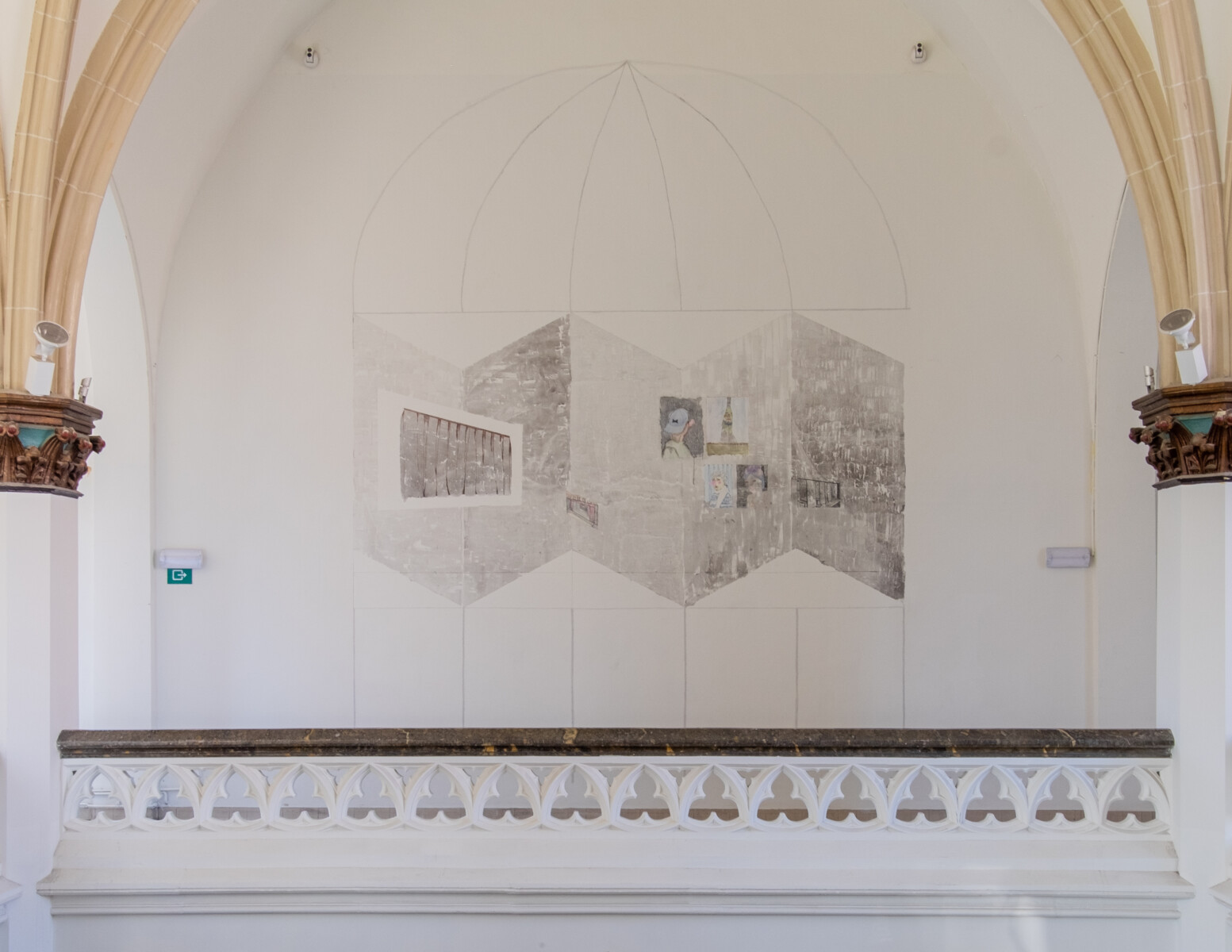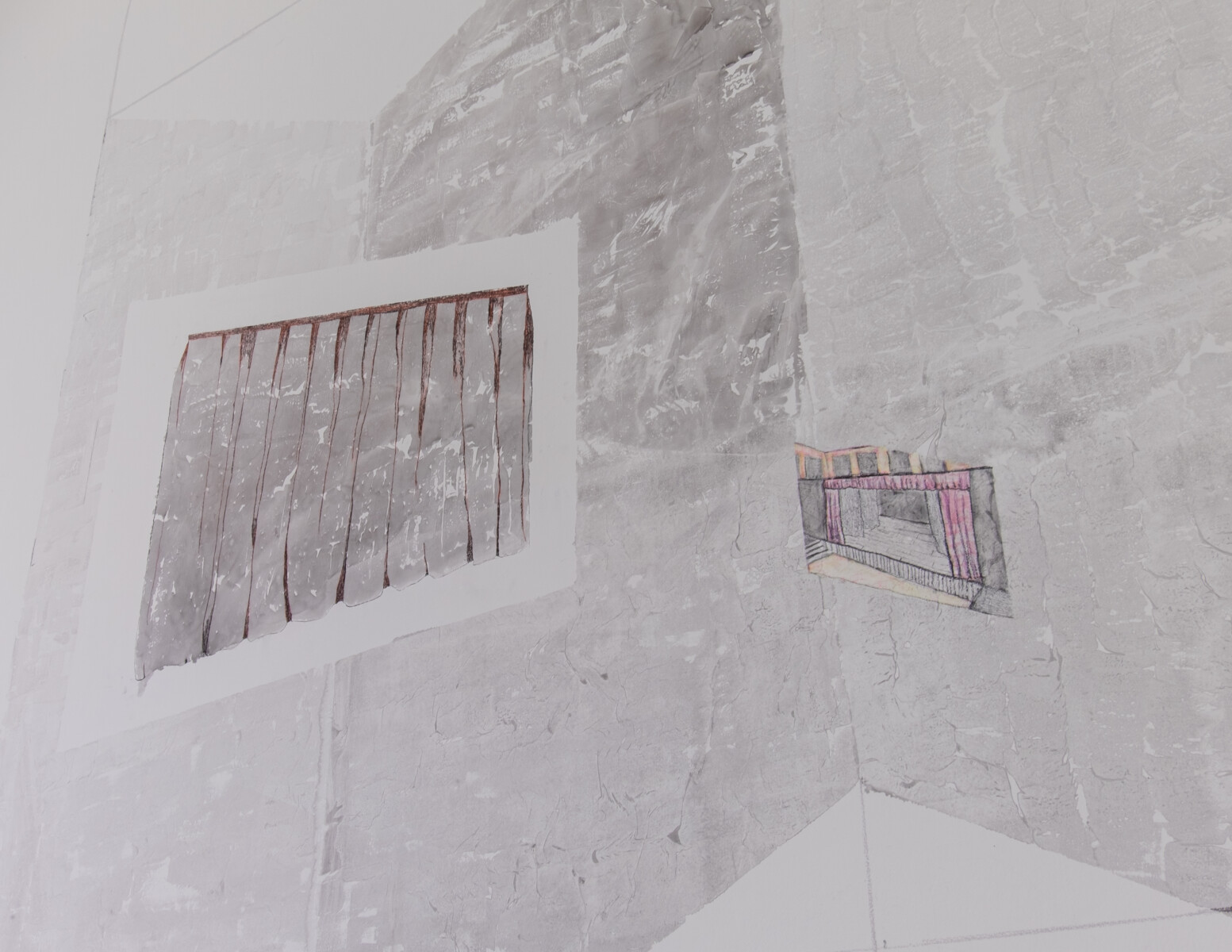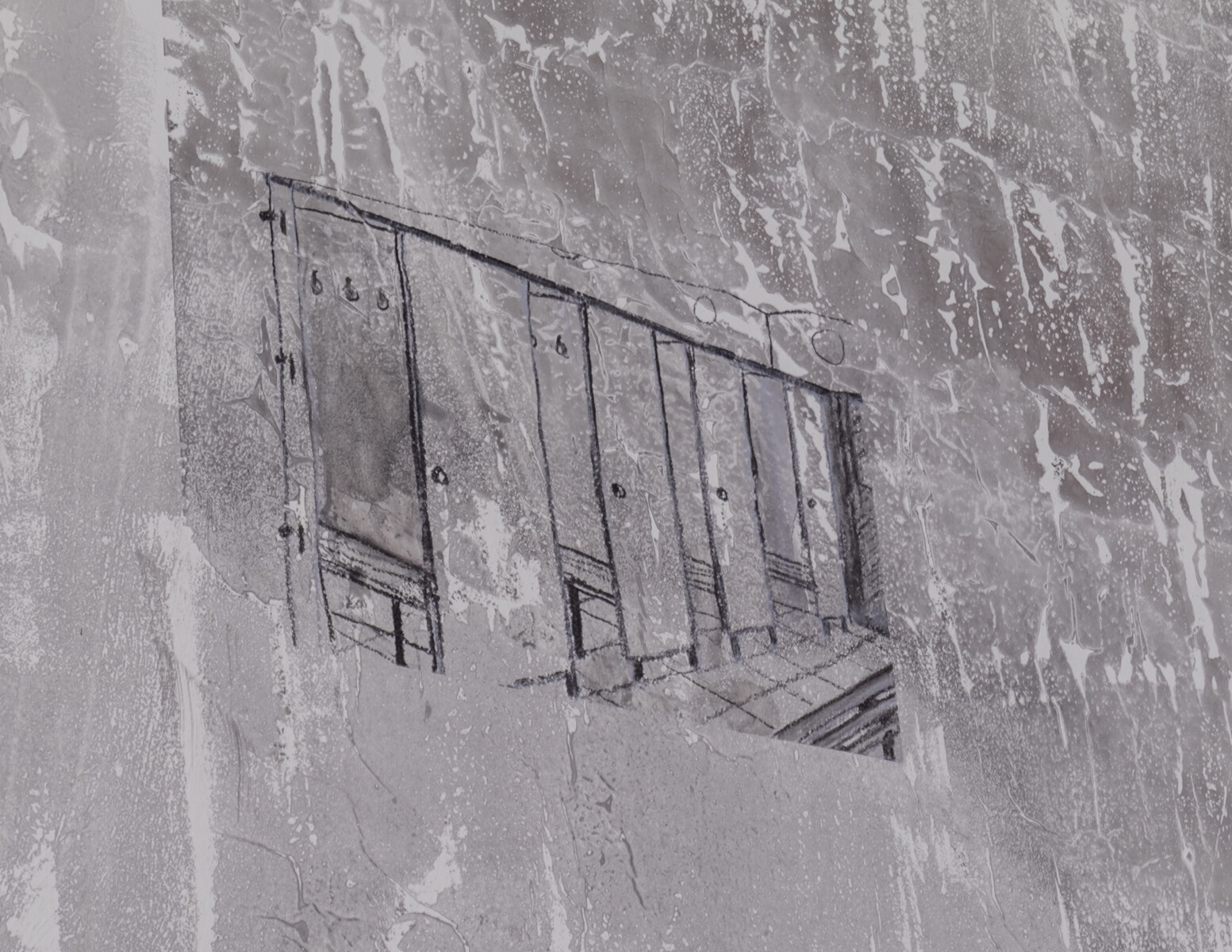Karen Van Hassel
SPITS No.07

The ladder has gone, the echo of the pencil-scratching has died away and the artist has gone her way. Ergo: time to return to the entrance hall of the Pauli building, where a fresh painting has appeared on the west wall under the pointed ceiling. It is not really a painting, but rather a drawing made by Karen Van Hassel (master of fine arts). For two months, she will be asking passers-by to stop for a moment. We already did just that.

We observe. The first thing that catches the eye is the saw-shaped, gray area that serves as a background – or should we say: screens the background. If you think of a dimension, you might see a paravent or folding screen. And therein lies the crux of the matter. Van Hassel precisely elevates that background to a model. At last the floral wallpaper is no longer lounging in the periphery of our gaze, but for once now enjoys its focus, as if it were a framed floral arrangement. That said, not many flowers are involved.
There is, however, a bouquet of other kinds of self-picking, notably a bevy of images scattered here and there throughout the paravent. Van Hassel derives this polyphony (polyvision?) of, at first glance, disparate elements from her own online chats and video conversations – the digital landscape of Generation Z, so to speak, where frames, screens and tabs teem lustily with one another. They stare defiantly at us, these images, and seem to ask, “Well, dear viewer, do you see the greatest common denominator?” Euh, let's see here. Toilet bowls, a man behind a curtain, a stage...


The title of the work brings some relief: Jan Klaas en een gordijn. Jan Klaas (usually Jan Klaassen), of course, refers to the famous rascal from Dutch puppetry. And this naturally involves a curtain, another screen. In earlier work, Van Hassel already used doll's houses and retables. Aha, there is a thematic line. Contrarian as we are - just like Punch (from Punch and Judy), by the way – let us think of a much too long word for it: inside-out theatricality. After all, doesn't the strangest but truest play often take place in the wings rather than on the stage itself? Or, say, in an entrance hall, one of those places where one thinks one is just passing by, but is still, unexpectedly, taken by the scruff of the neck?











